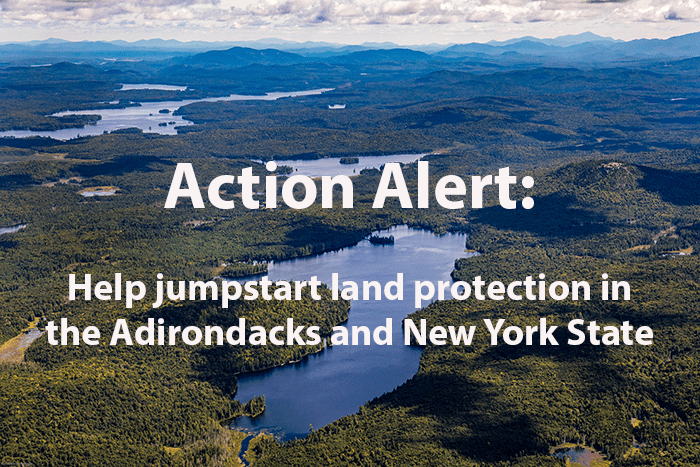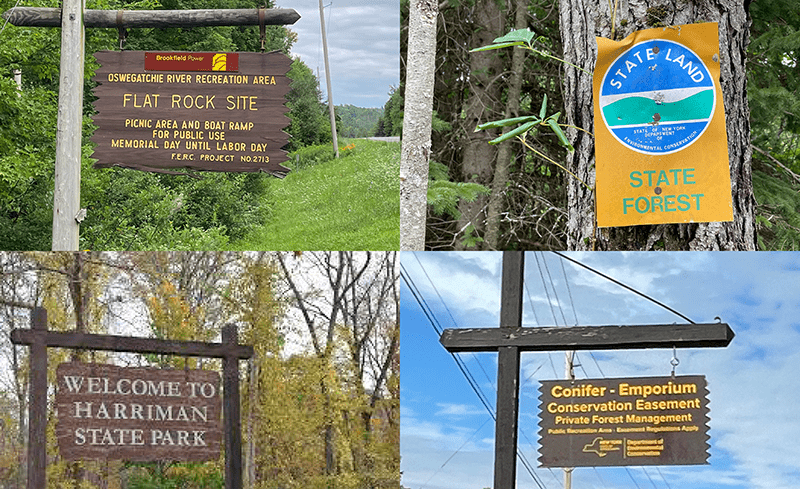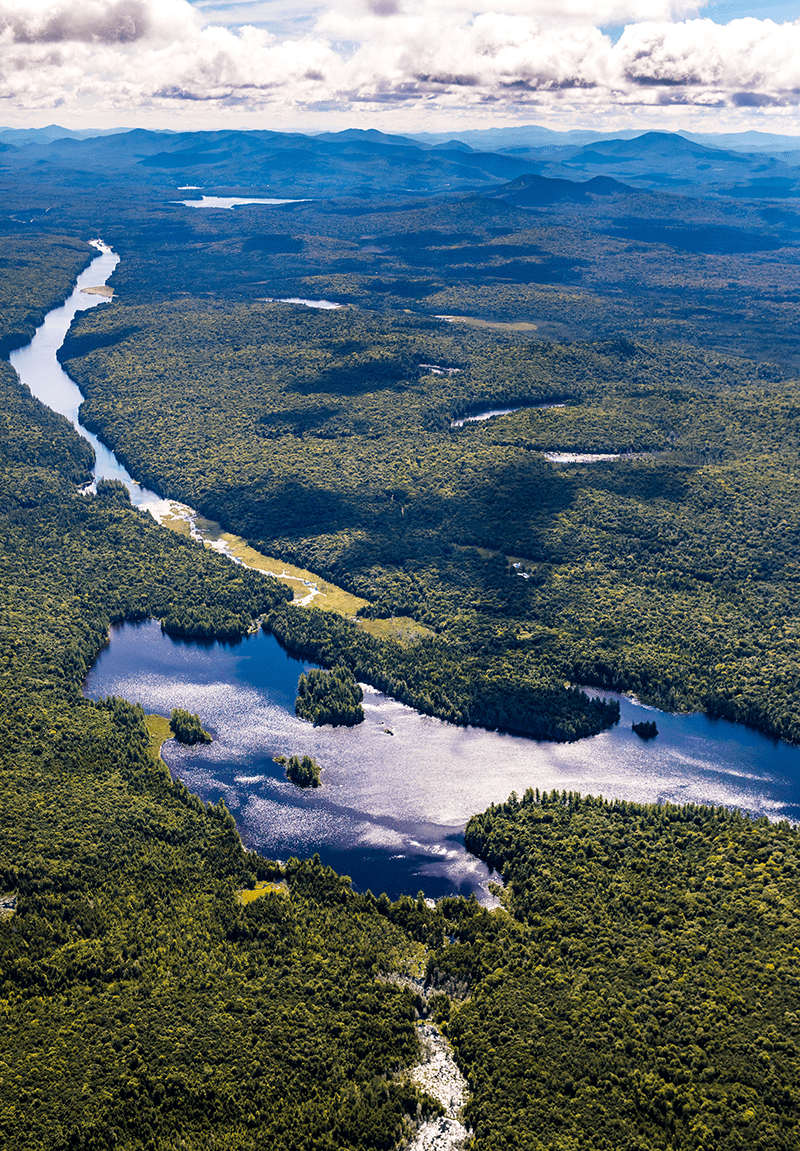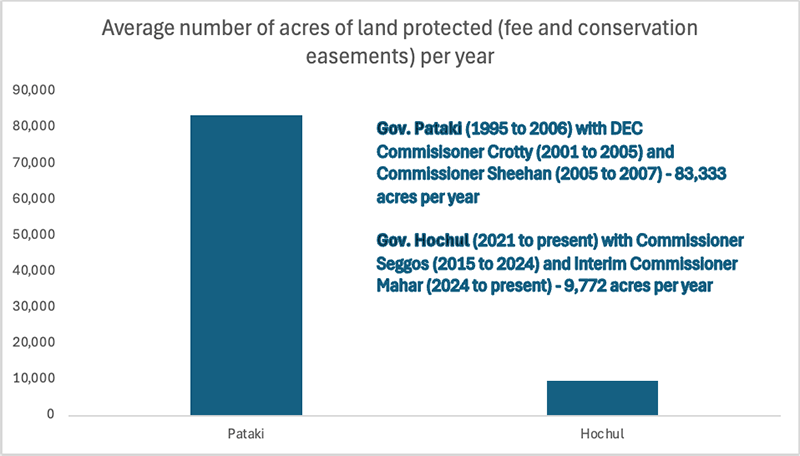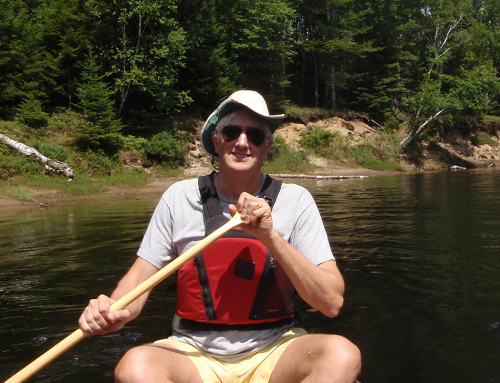Submit your comment today to the Department of Environmental Conservation on its draft “Strategies and Methodology” for complying with New York’s 30 by 30 Act
The Department of Environmental Conservation (DEC) is seeking public comments on a draft report about how the State of New York intends to meet its goal of conserving 30% of the state’s lands and waters by 2030 as set out in the “30 by 30 Act” signed into law in 2022. On July 1st, DEC and the Office of Parks, Recreation, and Historic Preservation (OPRHP) released a draft report with their “strategies and methodology” for how it plans to meet the 30% goal. These agencies are now taking public comments on this report.
Protect the Adirondacks is a big supporter of the 30 by 30 Act goal to protect 30% of New York State by 2030. At the end of 2023, Protect the Adirondacks released a special report 20% in 2023: An Assessment of the New York State 30 by 30 Act that assessed the amount and different kinds of protected lands and waters in New York State in 2023 and defined what it means for lands to be protected. This report showed that the Hochul Administration needed to protect 3 million acres across New York to meet the 30 by 30 goal. We published this report to hold state agencies and the Hochul Administration accountable for producing a fair and accurate assessment of the State’s progress towards the 30 by 30 goal.
According to the State’s calculations in its new report New York needs to protect an additional 2,836,161 acres to reach the 30 by 30 goal. Protect the Adirondacks commends the Hochul Administration, DEC, and OPRHP for going on the record about the need to protect 2.83 million acres in order to meet the 30 by 30 goal.
The DEC is now taking public comments on its draft strategies and methodologies. While this report is a good start, we believe it can be improved. Protect the Adirondacks generally supports the strategies proposed for protecting the sizeable acreage needed to meet the State’s goal, but their report can be improved in key ways.
Click here to read draft strategies report by DEC and OPRHP.
To send is an automatic email comment, go to the end of this article.
Background of the New York 30 by 30 Act
In 2022, Governor Kathy Hochul signed the “30 by 30” law that established a conservation goal for New York State of protecting 30% of the State’s “lands and inland waters” by the year 2030. This landmark environmental protection legislation enjoyed broad bipartisan support, passing the State Senate by a vote of 58 to 3, and the State Assembly by a vote of 137 to 8. The 30 by 30 law commits New York to do its part to reach a similar national goal established by President Joe Biden in 2021, to protect 30% of the nation’s lands and waters by 2030 and is a major step forward to protect New York’s open spaces, forests, and wetlands, which are cornerstones of the State’s long-term climate resilience and mitigation efforts.
Passing the 30 by 30 Act was an important step. Seeing the Governor sign the 30 by 30 Act was another big step. The July 1st draft “strategies and methodology” was another step for the State in strengthening its focus on land protection. However, the biggest steps come in early 2025 as state agencies are working on a blueprint in the new Open Space Conservation Plan for how to meet this ambitious goal of protecting 30% of New York and then the State starts buying land and creating new programs for land conservation.
The State Showed Its Numbers with its draft “Strategies and Methodology Report”
The 30 by 30 Act required that state agencies publish a report by July 1st that detailed the lands across New York State that have been protected and defines what it means for lands to be conserved. In this report, the DEC stated that “approximately 22 percent of New York State’s lands and waters are considered conserved.” According to the report, 21.88% or 7,639,505 acres have already been protected to date, and at least another 2,836,161 acres (out of New York’s total size of 34,918,885 acres) need to be protected.
It’s welcome news that the State is now on record about the need to protect 2.83 million acres across New York in order to meet the 30 by 30 Act goals. New York has a long and proud history of land protection, but the 30 by 30 Act demands greater action.
The draft strategies report also lays out a reasonably fair definition of protected lands in evaluating what lands are currently protected and what lands will count for protection in the future. The draft strategies report defines protected lands as “land, water, and habitats” that have “permanent and persistent use restrictions” as well as through regulatory frameworks (e.g., wetlands law protections). The draft strategies report recognizes that some areas and actions (e.g., by schools, colleges, voluntary certification programs, pollinator gardens on highways and capped landfills, agricultural districts and assessments, and local zoning initiatives) help to support the goals of 30 by 30, and we agree with the report’s approach not to directly count these lands and areas towards the acreage of protected areas because they are not permanently protected.
However, Protect the Adirondacks takes issue with the report counting “Forest Tax Law” lands, currently 385,992 acres, as protected lands. These lands are privately owned and voluntarily enrolled in tax reduction programs that landowners can opt out of at any time by paying a penalty. We also question the draft strategies report’s reliance on freshwater and tidal wetlands regulations and marine area restrictions for counting those lands (1.21 million acres of wetlands and 9,219 acres of marine areas) as protected. Even with these regulations and restrictions, some development activities may be allowed to take place on those areas under certain circumstances.
The State’s 3 “Strategies” for Meeting the 30 by 30 Goal
The report lays out three draft strategies to meet the 30 by 30 goal. Strategy #1 involves ramping up the existing land protection infrastructure in New York through existing state and local programs and the work of outside organizations and institutions. This will be a tall order as the report stated that only 43,676 acres were acquired by the State since 2019. Since 2011, the State of New York has protected an average of 15,000 acres per year. At this rate it will take 180 years to meet the 30 by 30 goal.
Governor George Pataki famously protected over 1 million acres during his 12 years in office. Governor Hochul will need to significantly increase her administration’s land protection efforts in order to meet the challenges that lie in front of the State.
Strategy #1 should identify how the State will protect 2,836,161 acres. Strategy #1 should detail the specific amounts of land and water (fee title and conservation easements) that the State will protect through each of the 10 listed existing land protection programs. This strategy should also include a recommendation that the Environmental Protection Fund (EPF) be increased to $500 million annually with at least $125 million dedicated to land protection. The DEC and OPRHP also need to significantly increase staffing for land protection and these positions should be identified.
Strategy #1 identified the State’s “Open Space Conservation Plan” “as the blueprint for the state’s Land Acquisition Program” that will need to lay the groundwork for the State to acquire significant acreage over the next five and half years. The Open Space Plan should set a goal for land protection. We urge the State to commit to acquiring 1 million acres of land in fee title and conservation easements in the new plan.
Strategy #2 should identify a specific amount of land and water (fee title and conservation easements) that the State will endeavor to protect through new programs. One of the new programs should be a forestland protection program for private landowners across New York that is based on the long-term carbon storage and sequestration benefits of protecting standing forests that are not managed for timber harvesting. Protect the Adirondacks has identified over 10 million acres of lightly developed lands across New York in land ownerships in tracts of 10 acres or more. These lands should be the focus of a new long-term carbon storage program.
Strategy #3 should provide additional guidance about how DEC and OPRHP will collaborate with conservation partners to develop and provide recommendations to the Legislature and state agencies. Who will lead this effort? Will there be stakeholder meetings in the future? Will there be future opportunities for public comment to assess progress and seek input on existing programs that are working or not working, and what new initiatives need to be undertaken? Will DEC commit to holding a public comment period on the annual reports that the 30 by 30 Act requires “to provide information with regard to the implementation and status of the goal”. There are many questions around Strategy #3.
Submit Your Public Comment Today
Public comments are due by the close of business on August 30, 2024 (the Friday before Labor Day weekend).
Please write your own comment letter to the DEC or you can use the form below to send an automatic comment.
Here’s where to submit your own letter:
Jeff Mapes
NYS DEC
625 Broadway, 5th Floor
Albany, NY 12233-4254
By email: 30×30@dec.ny.gov
Points for Public Comments to DEC on the draft “Strategies and Methodology” report for meeting the State’s 30 by 30 goal.
- I support the Hochul Administration assessment that an additional 2,836,161 acres need to be protected to meet New York’s 30 by 30 goal.
- I agree that “protected lands” under the 30 by 30 Act include lands and waters that are acquired by fee title and conservation easements for conservation purposes by the State of New York and by municipal and qualifying not-for-profit entities.
- “Protected lands” should not include the acreage of areas that are not permanently protected (e.g., lands voluntarily managed by schools, colleges or municipalities as community gardens, golf courses, or areas such as pollinator gardens on highways and capped landfills). The “Persistent Protection” category should be eliminated as these protections are not permanent.
- “Protected lands” should not include privately-owned Forest Tax Law lands (480/480a), listed at 385,992 acres, because the landowners can opt out of these voluntary programs at any time by paying a penalty.
- The Hochul Administration is currently protecting an average of 15,000 acres per year. At this rate, it will take 180 years to meet the 30 by 30 goal.
- The draft strategies report should outline specific yearly goals and benchmarks to achieve protection of at least 2,836,161 acres of lands and waters across the State by 2030.
- Strategy #1 should identify how the State will protect 2,836,161 acres. Strategy #1 should detail the specific amounts of land and water (fee title and conservation easements) that the State will protect through each of the 10 listed existing land protection programs.
- Strategy #1 identified the State’s “Open Space Conservation Plan” “as the blueprint for the state’s Land Acquisition Program” that will need to lay the groundwork for the State to acquire significant acreage over the next five and half years. The Open Space Plan should set a goal for land protection. We urge the State to commit to acquiring 1 million acres of land in fee title and conservation easements in the new plan.
- Strategy #1 should also include a recommendation that the Environmental Protection Fund (EPF) be increased to $500 million annually with at least $125 million dedicated to land protection.
- The DEC and OPRHP also need to significantly increase staffing for land protection and these positions should be identified in Strategy #1.
- Strategy #2 should identify a specific amount of land and water (fee title and conservation easements) that the State will endeavor to protect through new programs. One of the new programs should be a forestland protection program for private landowners across New York that is based on the long-term carbon storage and sequestration benefits of protecting standing forests that are not managed for timber harvesting.
- Strategy #3 should provide additional guidance about how and when DEC and OPRHP will collaborate in the future with conservation partners to develop and provide recommendations to the Legislature and state agencies.
Submit An Automatic Email Comment Today
Complete the form below and submit an automatic email article today.
The public comment period for this issue has closed.
Thank you very much!!

